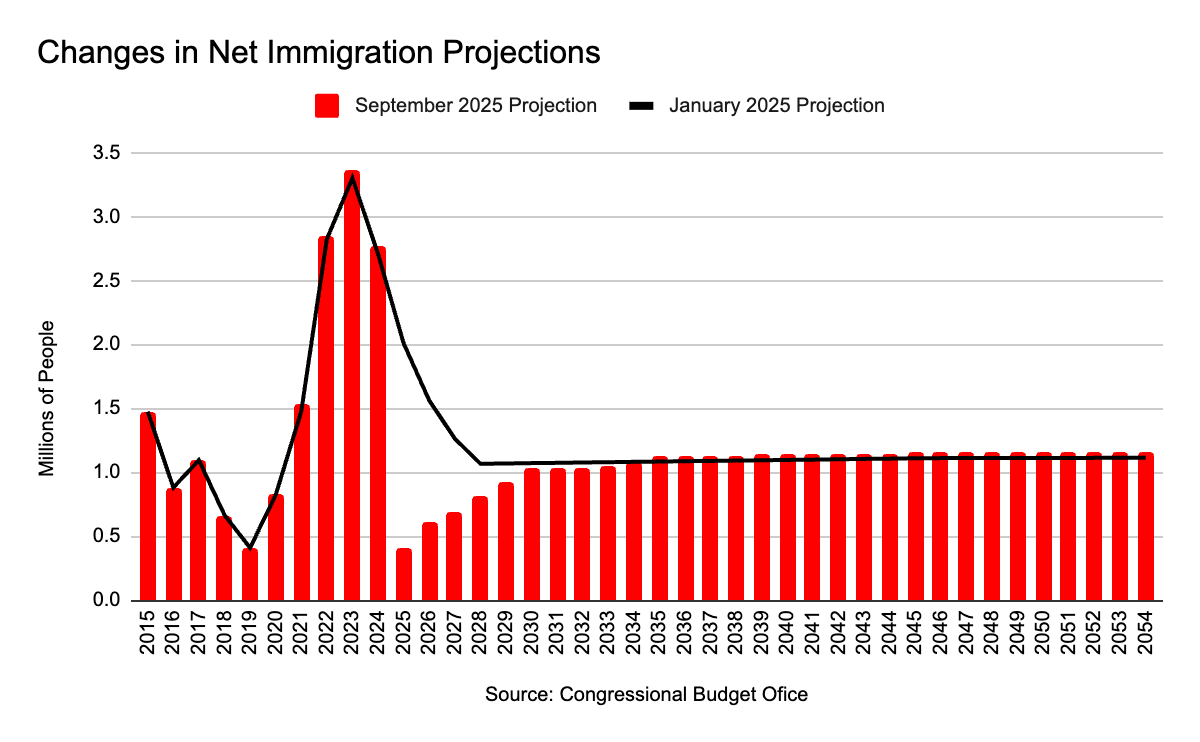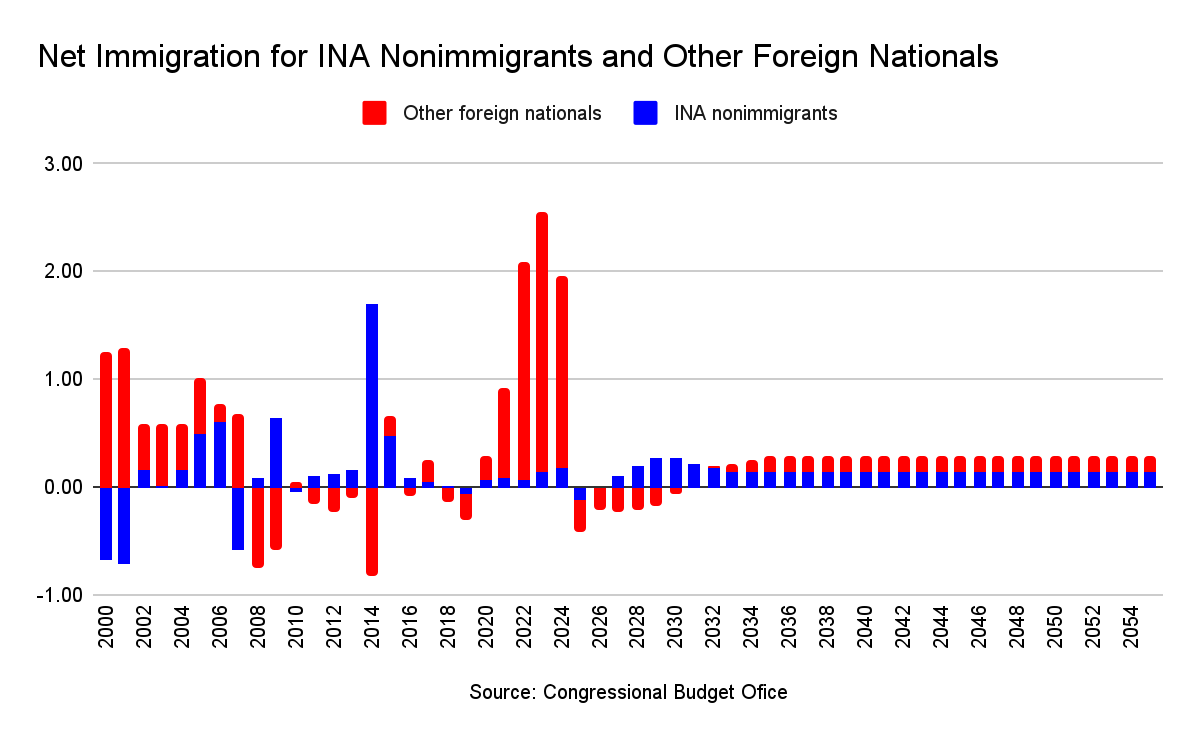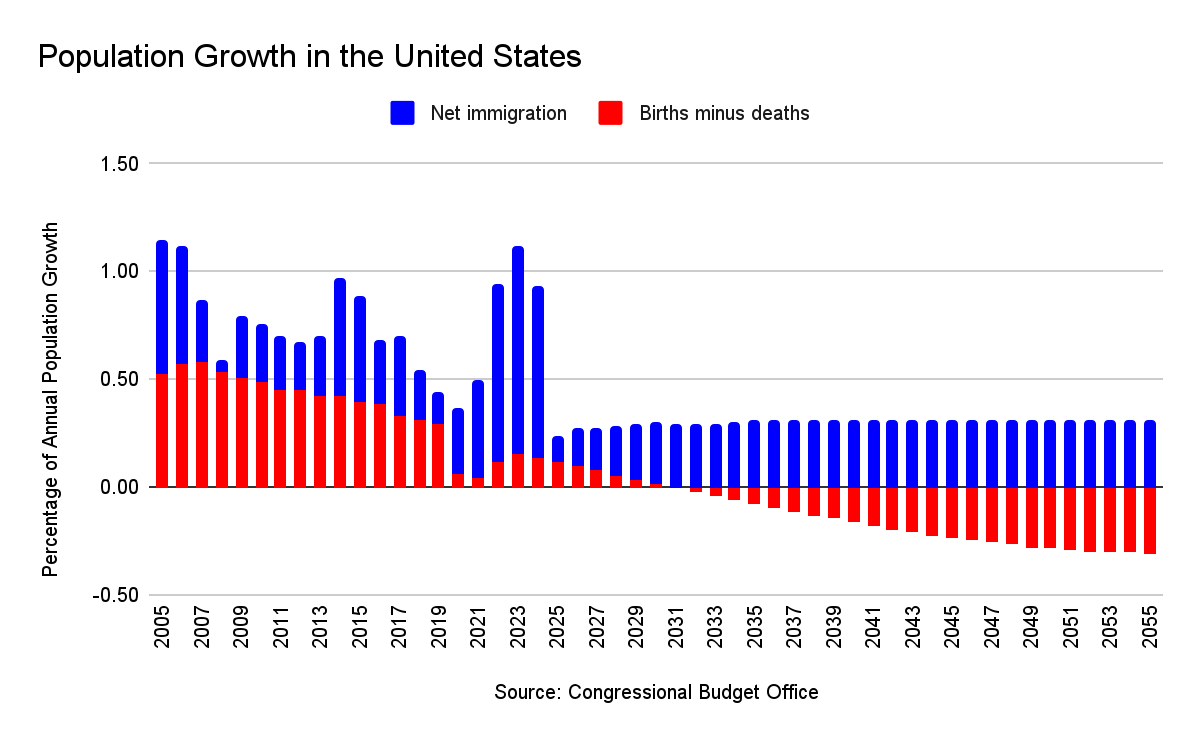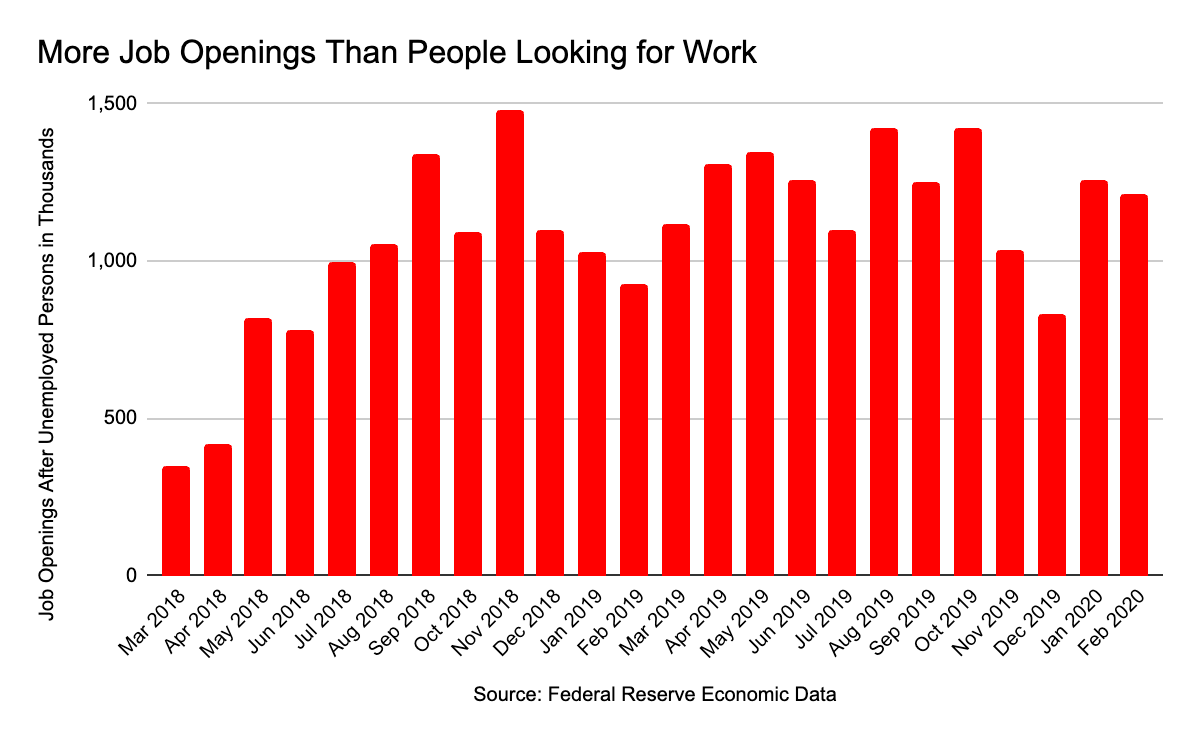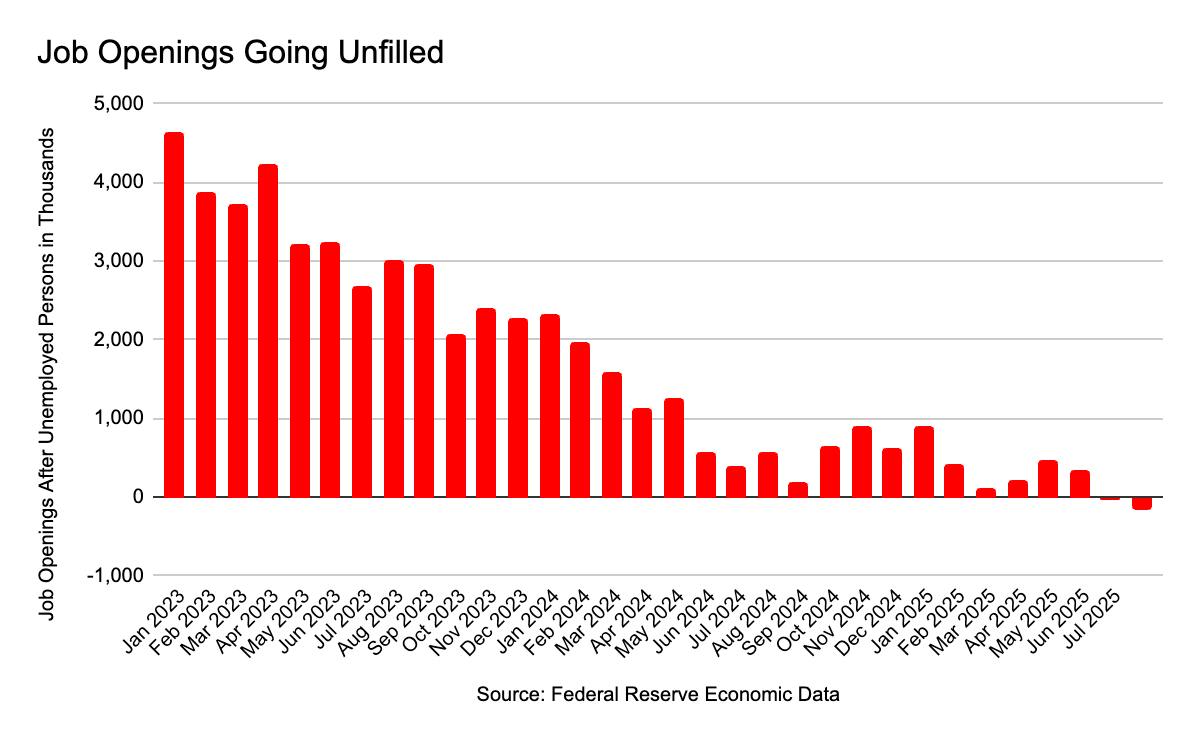The United States May See a Decline in the Native-Born Population in 2031
Deaths begin to outpace births in just six years
In January, the Congressional Budget Office (CBO) released its annual demographic projections. The data showed that the United States will see more deaths than births among the native-born population in 2033. The CBO released an update to those projections in September. The agency is now projecting that the nation will see more deaths than births in 2031.
This topic has become somewhat weaponized in the far-right ecosystem. Those provocateurs tend to use these data to decry the decline of the white population or promote conspiracy theories like the racist “Great Replacement Theory.” That’s not where I come from when I write about demographics. My concerns are based entirely on the economic effects of a decline in the available workforce. I believe we need more immigration, not less, to meet the workforce needs of the United States.
Declining fertility rates are a problem that plagues many—if not most—developed economies. It’s become such a problem that some countries have created programs to boost birth rates. The results of those programs are mixed. Some countries that have developed policies have seen modest improvements in fertility rates, but there hasn’t been a reversal of the trend. Those policies include paid parental leave, childcare, and income support. Considering the projected growth of federal spending and debt, budgetary choices would have to be made to bring similar programs to the United States.
The CBO released the update of its demographic projections to reflect policy changes that have occurred since January. These changes are specifically related to executive orders on immigration and the so-called “One Big Beautiful Bill Act.” The report explains, “Administrative actions taken since January 20, 2025, are the largest factor decreasing CBO’s projections of the number of immigrants in the country. The 2025 reconciliation act (Public Law 119-21) also decreases that number.” Indeed, net immigration to the United States has dramatically declined in 2025. In January, the projection was a little more than a net of 2 million people would immigrate to the United States. That has been revised to 408,000. The figure is expected to slowly notch up to 1 million in 2030 and eventually to 1.2 million in 2044.
The decline can be attributed to a reduction in “INA nonimmigrants” and “other foreign nationals.” INA nonimmigrants are lawfully admitted to the United States on a temporary basis, including through work visas like H-1B, H-2A, and H-2B visas. Other foreign nationals include individuals who are unlawfully present in the United States. However, the designation, so to speak, also includes deferred action recipients and individuals admitted under Temporary Protected Status.
Overall, the CBO is projecting roughly 5.4 million fewer people in the population in 2054 than it did in its January report. The population of people aged 24 and younger is expected to decline from 106 million in 2025 to 91 million in 2054. Every other age group is projected to increase over the 30-year window.
The prime working-age population will increase by around 1.58 million people from 2025 through 2054. That’s about 4.4 million fewer than the CBO projected we’d see in this population back in January. This is a bad sign. Although the economy hasn’t lived up to expectations in recent months, prior to July, there was a significant number of job openings on the market. This was something we saw in the economy on a consistent basis beginning in March 2018 until the pandemic began in March 2020.
Here’s a look at the pre-pandemic picture.
Here’s the more recent look. When the economy recovers from whatever we’re experiencing right now, we’ll likely see the same pattern emerge. Job openings will likely outpace the number of unemployed people seeking work.
What does this all mean? It means the population of the United States is getting older. This has implications for programs like Social Security and Medicare, which have already seen a decline in the ratio of workers to beneficiaries. As noted, we’ll see slower labor force growth. Add to that economic stagnation as the growth of gross domestic product slows to anemic levels. This is the future we, as a society, have chosen. We’ll need more immigration to fill in the gaps in our workforce, and that means we need to modernize our immigration system. Immigration restrictionism, coupled with low fertility rates that are projected, is a path to decline.



